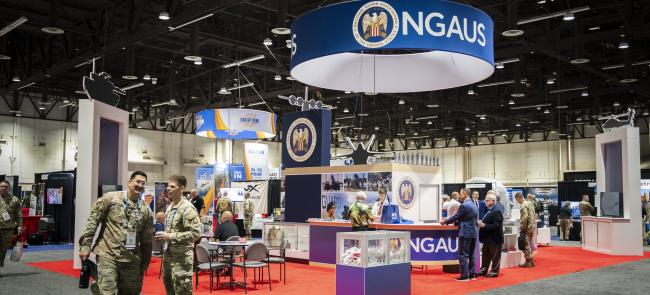
Issue 44 | Fall 2024
We are entering into a new year of National Guard Association of the United States (NGAUS) Resolutions. In this article, we dive into the mechanics of the resolution process. Additionally, you’ll find a few tips on “How to” submit a comprehensive resolution.
Resolutions shall be a statement of policy of the (NGAUS) regarding legislative objectives and positions on manpower, force structure, roles and missions, equipment, and other issues consistent with the purposes and objectives of the Association.
Resolutions are categorized as Joint, Army National Guard and Air National Guard, (J, ARNG, ANG).
Joint resolutions apply to issues that transcend both services, and are normally related to personnel, medical, or homeland defense. Air and Army resolutions typically relate to the missions or equipment under the purview of the Army National Guard or the Air National Guard.
Resolutions, or legislative ideas, are generated at the state level and become the legislative agenda of NGAUS upon being adopted at the annual general conference. Resolutions may be policy or equipment related.
The NGAUS Legislative Programs staff will coordinate with Task Force chairs for assignment of resolutions.
Standing Resolutions: When a resolution is adopted by the NGAUS membership, it is considered a “standing” resolution and no longer requires an expanded explanation. Most standing resolutions will only require an introductory sentence or two, followed by items that summarize the programs or modernization requirements that promote a common theme (readiness, improved capability, recruiting, retention, etc.).
Note: The following By-Law change was adopted 26 August 2024 in Detroit, Michigan.
Section 8.04 – Resolutions
Resolutions shall be a statement of policy of the Association with regards to legislative priorities objectives and positions on manpower, force structure, roles and missions, equipment and other issues consistent with the purposes and objectives of the Association as set forth in Article I. Resolutions adopted by a General Conference are effective for one year or until the next General Conference three years, but may be extended for one year increments. All extensions must be considered individually.
The NGAUS Resolutions team is currently working on the Standard Operating Procedure to incorporate this By-Law change for next year’s committee process.
Draft Resolutions: Draft resolutions propose changes (add, delete, change wording) or create a new resolution. Only state associations may submit draft resolutions. The deadline for submitting draft resolutions to the NGAUS Legislative Programs staff is July 1 of each year.
Emergency Resolutions: Resolutions reported to NGAUS after the established deadline of July 1 and before July 31 may be considered as “emergency” resolutions but only if they represent true emergent conditions that did not exist at the time of the sponsoring state’s conference or arise from circumstances beyond the control of the sponsoring state.
DO’s and DON’Ts of Resolutions:
DO’s
- Do keep the resolution simple and applicable to state that needs the equipment or other issues but highly recommend socializing capabilities with additional states for support
- Do discuss with the Executive Director (ED) of the state association prior to submitting
- Do check and ensure that there is no standing resolution already in the legislative agenda (you can find them on the NGAUS website) if language needs to be modified that is also an option
- Do ensure there is a white paper attached that explains the resolution and keep it one page long
- Do contact the ED and ensure the resolution is in the packet of resolutions to be considered at the state association resolution committee meeting(s)
- Do consider filling the form out with the ED contact information on it that can be changed later to the resolution chair for the state association conference
- Do ensure to request sustainment funding if necessary
DON’Ts
- Don’t put proprietary product names in the resolution (it will immediately fail)
- Don’t put proprietary nomenclature in the resolution when explaining it in the white paper
- Don’t use acronyms (most time people that are reviewing are not experts in the technology/issue)
- Don’t over engineer or complicate the resolution (i.e., if a technology or issue, don’t over explain with technical terms because you may lose the attention of the resolution chair or cause a misunderstanding of the intent)
Additional information can be found at the NGAUS website:





